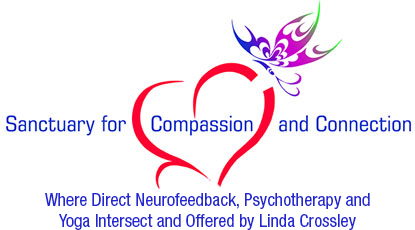5 Intention-setting Ideas for the New Year
It’s time to release our attachment to new year resolutions!
Research out of the University of Scranton suggests that just 8% of the people who set New Year’s resolutions actually succeed in achieving those goals, thus leaving the majority of us feeling like failures. I don’t know about you, but I don’t like feeling like a failure!
Some of the top resolutions people make include starting a new diet, losing weight, and saving money. All of these goals imply a need for more self-discipline, which brings with it an implication that we are currently not doing good enough. Coming from a place where we focus on giving up something to achieve an end result has the goal founded in avoidance, even in the name of self-improvement. These behavior changes are rooted in fear, whether from our conditioned pasts or the unknown future. Not fertile ground for real and lasting growth to occur!
Setting intentions, Sankalpa in Sanskrit, are made from the heart, not the mind, and focus on the growth of our souls. So, if the reason we set resolutions at this time of year is to improve our lives in the new year, I offer you the following ideas for your new year intentions for consideration:
- Be Braver. Taking risks, and perhaps even embracing failure as a natural part of our journey, will bring resilience and more happiness into your life. Our culture that overstimulates the drive for perfection creates anxiety and a fear of failure, so that we are more likely to withdraw than pursue our dreams with passion. Perhaps writing down one small risk you are ready to take in the new year and acknowledging that failure simply assists us in refining our approach. After you invite your courageous part forward and take the risk, make sure to sit with the outcome and journal about what you learned from it!
- Be Kinder. When we support others, it makes us feel good – and it also makes the other person feel good too! So, if we want to improve our lives in the new year, perhaps set the intention to do more acts of kindness. When we model kindness, the seeds that get planted in others grow and spread. What if you simply did one act of kindness a week next year? Those acts might just grow a forest of kindness for everyone to enjoy!
- Be Curious. Curiosity is a personality characteristic that is associated with success. So when we can cultivate curiosity within ourselves, it will support us on our own growth journeys. It creates an atmosphere that welcomes new things into our lives. It supports us in embracing the inevitable changes that will come and actually makes us more excited for those changes! So how do we actually exercise the curiosity muscle? Consider identifying something that tends to bring up a reaction of judgment and craft some questions you might ask to gain a deeper understanding. When you start to seek the answers to those questions, observe how judgment shifts and/or changes.
- Be Grateful. Being grateful has been shown to support emotional wellness. If you don’t already have a regular gratitude practice, consider setting the intention to try it out this year. If you already have a regular practice, consider taking a new – perhaps more challenging – approach this year. Try sitting with those life challenges (that we might label as bad, because they make us sad or mad) that we wish did not happen and find something about the challenge that you are grateful for. What might help is remembering that all of life’s experiences have contributed to your mind, body and spiritual growth and advancement. They have served you in some way, although it might not be clear to you in the moment how. You might tap into curiosity here to help craft some questions to ask yourself such as “What painful experience(s) were the seeds to the parts of myself that I love?” and “What scary experience become a source of pride to you because you survived it and lived to tell the story, supporting the growth of your risk-taking, courageous part?”.
- Be Compassionate. Do you want to be a more active, powerful participant in changing the world next year? Consider practicing self compassion! Much research has been done on how self compassion can neutralize those emotional charges within us that create disharmony. And if we are in a place of disharmony, it is very difficult to bring harmony out into the world. On the other hand, if we regularly use the tool that will bring comfort and peace to ourselves, then we can be more open to bringing that same comfort and peace to others. Modeling such self compassionate behaviors stimulates the mirror neurons in the human brain, giving others permission to use this tool for themselves. Compassion is contagious, so perhaps this is what you decide to spread around next year!





